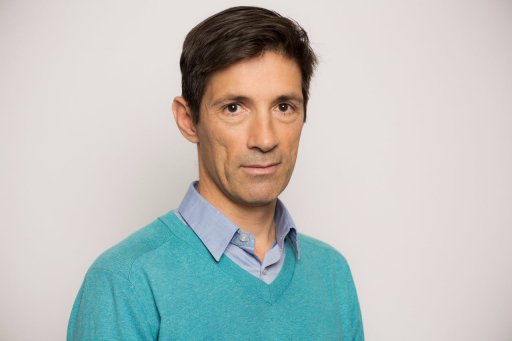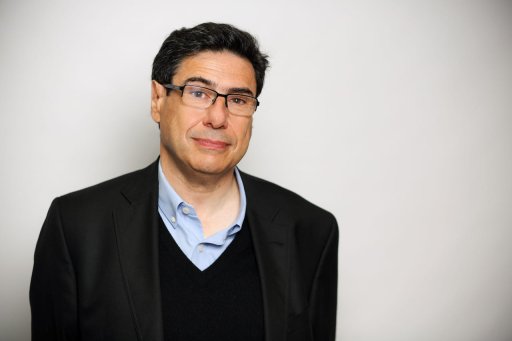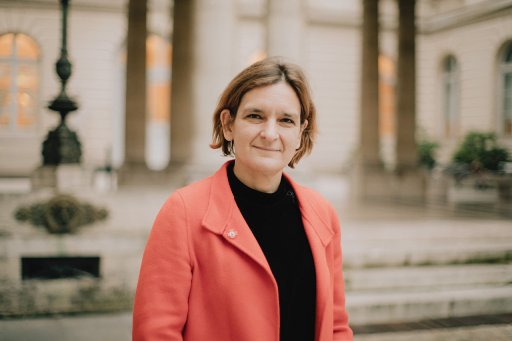Interview with Stéphanie Lacour

Stéphanie Lacour is a specialist in neurotechnologies and heads the Neuro-X interdisciplinary institute at the Swiss Federal Institute of Technology in Lausanne (EPFL). Trained as an engineer, she conceives a science based on dialogue between experts to develop and implement the next generation of electronic devices, ideally flexible, aimed at communicating with the nervous system for therapeutic purposes. In 2023-2024, she has been invited to occupy the annual Technological Innovation Liliane Bettencourt Chair at the Collège de France.
How did you become interested in science ? And neurotechnologies in particular ?
Stéphanie Lacour : I was a rather curious child, who wanted to understand how things worked, and I was more at home in the sciences than in literary subjects. Then it was my interest in music that steered me towards a career in engineering. Being a flautist - Ihesitated for a long time before committing myself to music - I thought that studying acoustical engineering would enable me to combine these two passions. However, my training at INSA Lyon made me realize that I wasn't that interested in this subject, whereas electronics - and in particular its interfaces with living organisms - very quickly captivated me. I graduated in electrical engineering, specializing in integrated device technology. Then, during my thesis, I became interested in the development of skin hydration sensors, prepared using microelectronics technologies. I then moved to the United States, to Princeton University, where I discovered a completely new world, both in terms of the subject matter and the way research was conducted. I joined Prof. SigurdWagner, who was interested in the use of thin-film electronic materials, in other words, flat screen technology. I learned to manipulate new materials (plastics, elastomers), explored how to integrate them into the microfabrication processes of electronic devices, and discovered that by depositing a thin layer of gold on a rubber the metal track could become " elastic ". This was the starting point for deformable electronics and all the devices my team has developed since.
How did you come to explore the potential therapeutic applications of these devices ?
Through a series of chance encounters, I began working with the group of Prof. Barclay Morrison III, at Columbia University, who were interested in brain trauma induced by excessive mechanical deformation of the brain. I had developed electrodes on deformable supports, and realized that this technology could be used to study them. We were going to culture brain sections on these deformable supports, replicate various levels of deformation similar to head trauma, and record neuronal activity in situ. This work was a major pivot towards my involvement in neuroscience. Before, my research was very much focused on materials and electronic devices themselves, but this collaboration was a revelation. These devices, mechanically similar to biological tissue, could be effective entry points for communicating with the nervous system. Later, in Cambridge, UK, I was keen to learn more about how neural circuits work, so I joined the group of Prof. James Fawcett, a neuroscientist with expertise in axon regeneration after nervous system injury.
How do these neuroprostheses work ?
An essential aspect of a neuroprosthesis is communication with the nervous system. The nervous system processes a great deal of information, in the form of electrical impulses . This provides a natural entry point for electrodes to " listen to or modulate " these signals. The electrode is an electrical conductor that establishes contact between the biological tissue and the measurement (or stimulation) circuit. It is defined by its site - a geometrically well-defined surface, which may interface with a neuron or part of the cortex. It is made from a noble metal, often platinum, and is traditionally rigid, or at best flexible. Yet biological tissues, such as the nervous system, are extremely soft and have curved shapes. We have therefore continued to develop more flexible and deformable electrodes. For their support, we work with polymers called " elastomers ", or gums, which have very high elastic capacities - we can stretch the material, sometimes to twice its initial length, then release it so that it returns to its initial structure. Metals, on the other hand, are not at all elastic.
How have you overcome this problem ?
The key point of our work is to understand how to program elasticity into materials that do nota prioripossess this characteristic. We deposited electronic materials in thin layers on substrates such as rubber. In doing so, we noticed that the metallic layer adopted some very interesting topographies. Instead of the uniform, continuous structure required for electrical conductivity, we observed a layer loaded with cracks. By opening and closing under mechanical stress, these cracks enable the metal film " " to absorb the elongations generated, without deforming it, rather like an accordion. The material itself is not elastic, but geometrically, through the conformation of its structure, we succeeded in inducing reversible deformation. We used metal layers a few tens of nanometers thick to induce these microcracks, and silicone for the elastomer. Following this observation, we systematized our approach, designing all the patterns to program this elasticity. The advantage is that these patterns can be transferred to any type of material, such as platinum or even glass. We wanted to have the widest possible palette, to design various electronic devices compatible with the severe constraints imposed by a translation towards clinical applications, such as the toxicity, stability and performance of the materials used. Platinum, for example, is the material of choice for all implanted electrodes, as it is highly inert and presents a lower risk of toxicity than other metals.
What major technical and material challenges still need to be overcome to make these devices implantable and effective ?
To develop a neuroprosthesis, we need to design a system that includes a power source, electronic circuits to generate and modulate the electrical pulses imposed on the nervous system, and to store, filter and process the neuronal information measured by the electrodes. We know how to make flexible electrodes, but not yet flexible electronic circuits, in the biocompatible and implantable sense of the term. To achieve the computational performance of the electronics needed to carry out the required measurements or stimulations, we need silicon and CMOS technology [1]. So today, we're at a junction : elasticity and biointegration versus rigidity and performance ; I think the next implantable systems will be hybrids. The part at the interface with the nervous system will be physically biomimetic, but the electronics will remain rigid, miniaturized and increasingly computationally and energy efficient. Another key point is the encapsulation of these structures. To implant active electronics - a silicon integrated circuit - the only clinically approved option today is to enclose it in a sealed titanium case. This approach is not at all suitable for placing electronics invisibly in the brain, for example. What's more, thin-film implant technologies have yet to demonstrate the long-term stability (twenty to thirty years in vivo) required for future therapeutic approaches. There is therefore a real scientific challenge surrounding the choice and design of encapsulation materials to ensure the longevity, stability and robustness of the system.
What is the range of therapeutic applications for these prostheses ?
Today, the implants used daily in humans are prepared using technology similar to that used in pacemakers. Firstly, there are hearing aids, notably the cochlear implant, which enables completely deaf patients to regain sound perception and good hearing ability. The technology is sufficiently advanced for babies born deaf to be implanted at birth - a technology they will keep for the rest of their lives, illustrating the need for longevity and stability in technology. Secondly, the deep brain stimulation implant helps control certain neurological disorders associated with Parkinson's disease, dystonia or obsessive-compulsive disorder. Finally, spinal cord stimulation implants provide relief for patients suffering from chronic pain. Neurotechnology also aims to provide therapeutic and assistive solutions for patients suffering from neurodegenerative diseases, such as Charcot's disease, epilepsy and traumas such as spinal cord injury. Clinically, at present, only stimulation implants are used to modulate neuronal activity. We don't yet have an implantable technology that's stable enough, efficient enough and integrated enough with biology to perform precise, long-term neuronal measurement. This is one of the biggest challenges. This is important, because many of the therapies based on these neurotechnologies require a system known as " loop ". In other words, when we stimulate the nervous system, we tell it to perform a certain action, and the induced biological feedback will in turn influence the stimulation profile, enabling more effective and natural control.
You work daily with engineers, doctors and surgeons, among others. How do you navigate this highly interdisciplinary environment ?
In this field, it's vital to break down the silos. The neurotechnologies of the future will only have an impact if doctors, clinicians, technologists, neuroscientists, engineers and computer scientists are brought together around the table. We have to solve a global problem that calls for a multidisciplinary team. Everyone has their own area of expertise, but we have to be willing to cross boundaries into areas where we haven't been trained. I'm basically an engineer, but I've learned to talk to doctors and neuroscientists to better understand their needs, and to present them with our challenges so that they also understand the limitations of the technology. If an engineer works alone, in his own corner, he will produce a device that is often too complex for the surgeon to use. But it's vital to understand the needs and imperatives of the device's end-user. Over the last one or two decades, academics have become increasingly aware of the benefits of working at the interface between disciplines. A crucial question is how to train people to work across disciplinary boundaries, and I think that the academic world, in general, is not yet very well adapted to this. At EPFL, we've just opened a new interdisciplinary master's program, called " Neuro-X ", which exposes students to the three core areas of neurotechnology : neuroscience, neurocomputation and engineering. The first class will graduate this autumn.
For the year 2023-2024,you have been invited tohold the annual Technological Innovation Liliane Bettencourt Chair. What are your expectations of this chair ?
I'm very humbled by being elected to this chair, and I confess that I still find it hard to believe. I'm plunging into the unknown ! I'm very curious about the encounters I'll have during the year. I hope I'll be able to be as educational as possible during my lectures, to show what can realistically be done with neurotechnologies, and the challenges they represent. My idea is to convey notions and knowledge that are as quantitative and concrete as possible, in a field that is very much in vogue ; the coverage of neurotechnology in the media and social networks can give the wrong idea of the state of the art. What's important to me is to advance our knowledge ; we need to put new neurotechnology options at the service of new therapies for patients suffering from neurological disorders or trauma, and give them the opportunity to continue living in conditions that enable them to enjoy life.
Interview by William Rowe-Pirra
Glossary
[1] CMOS :Complementary Metal Oxide Semiconductor - technology for manufacturing electronic components.









